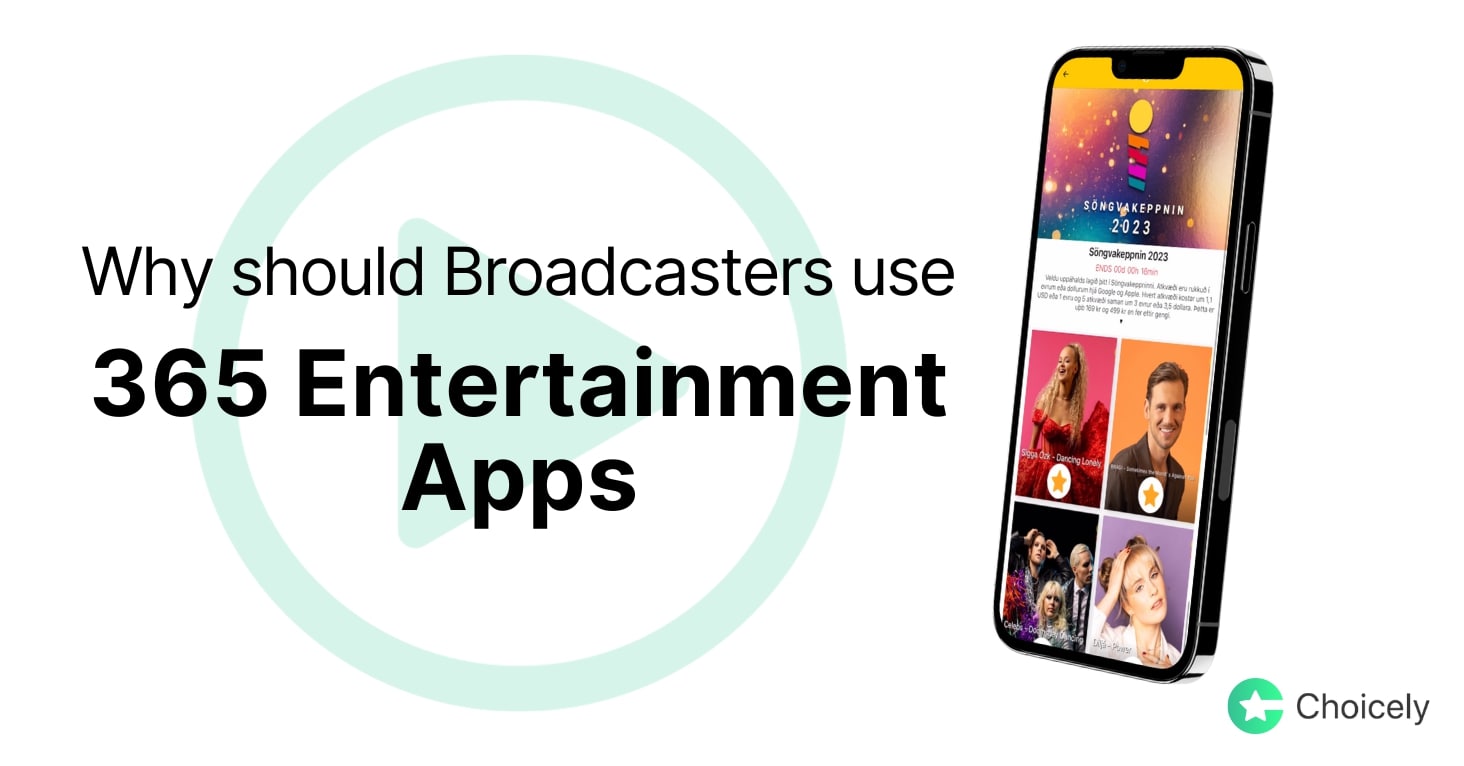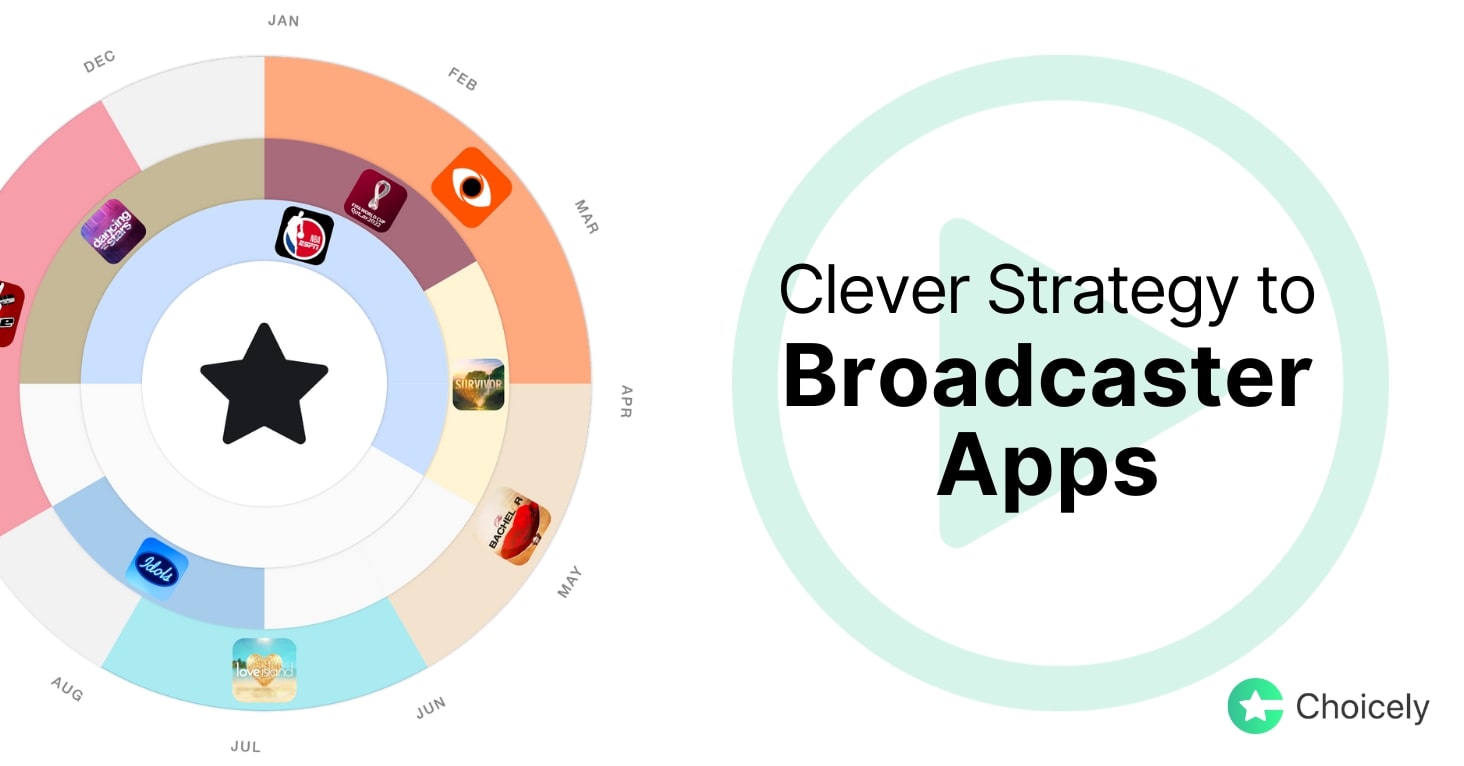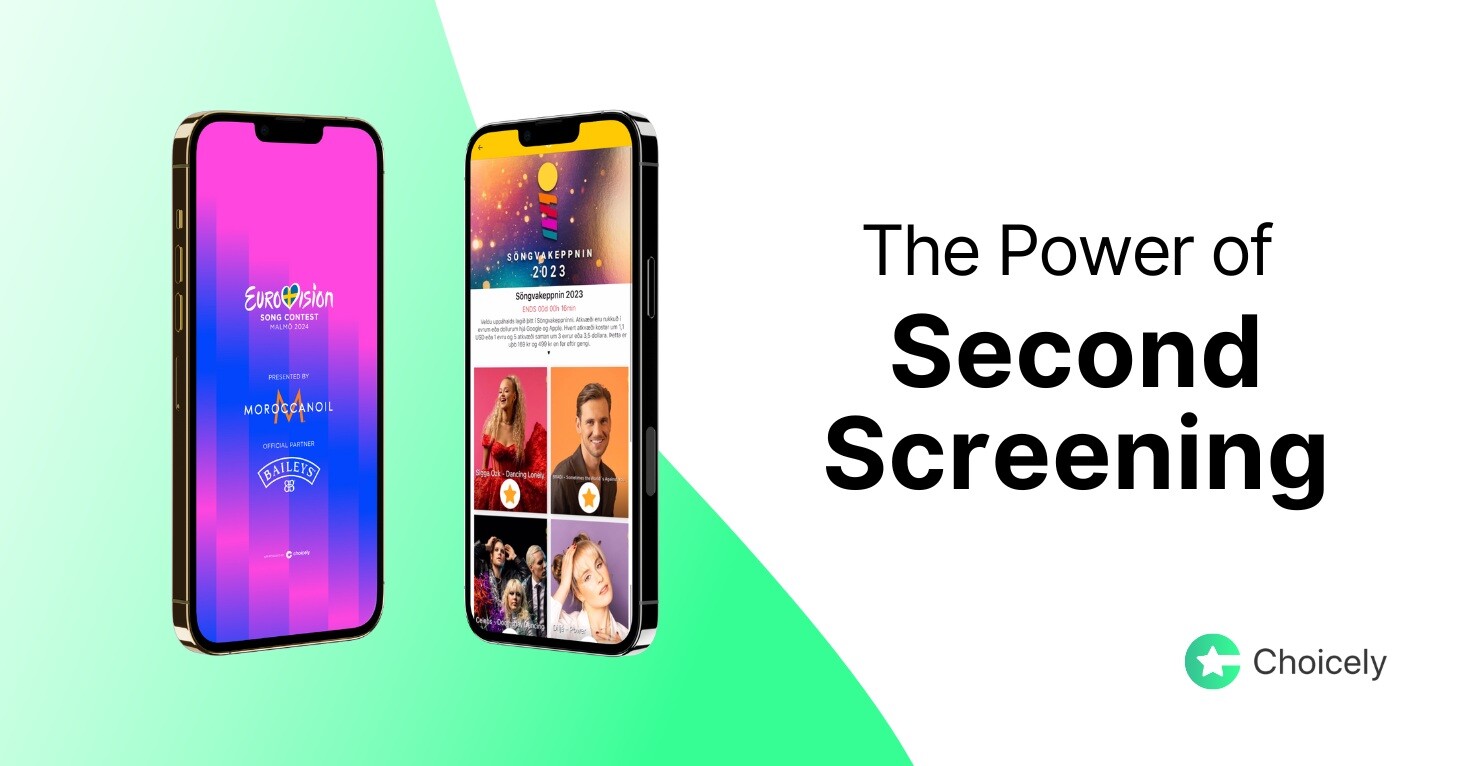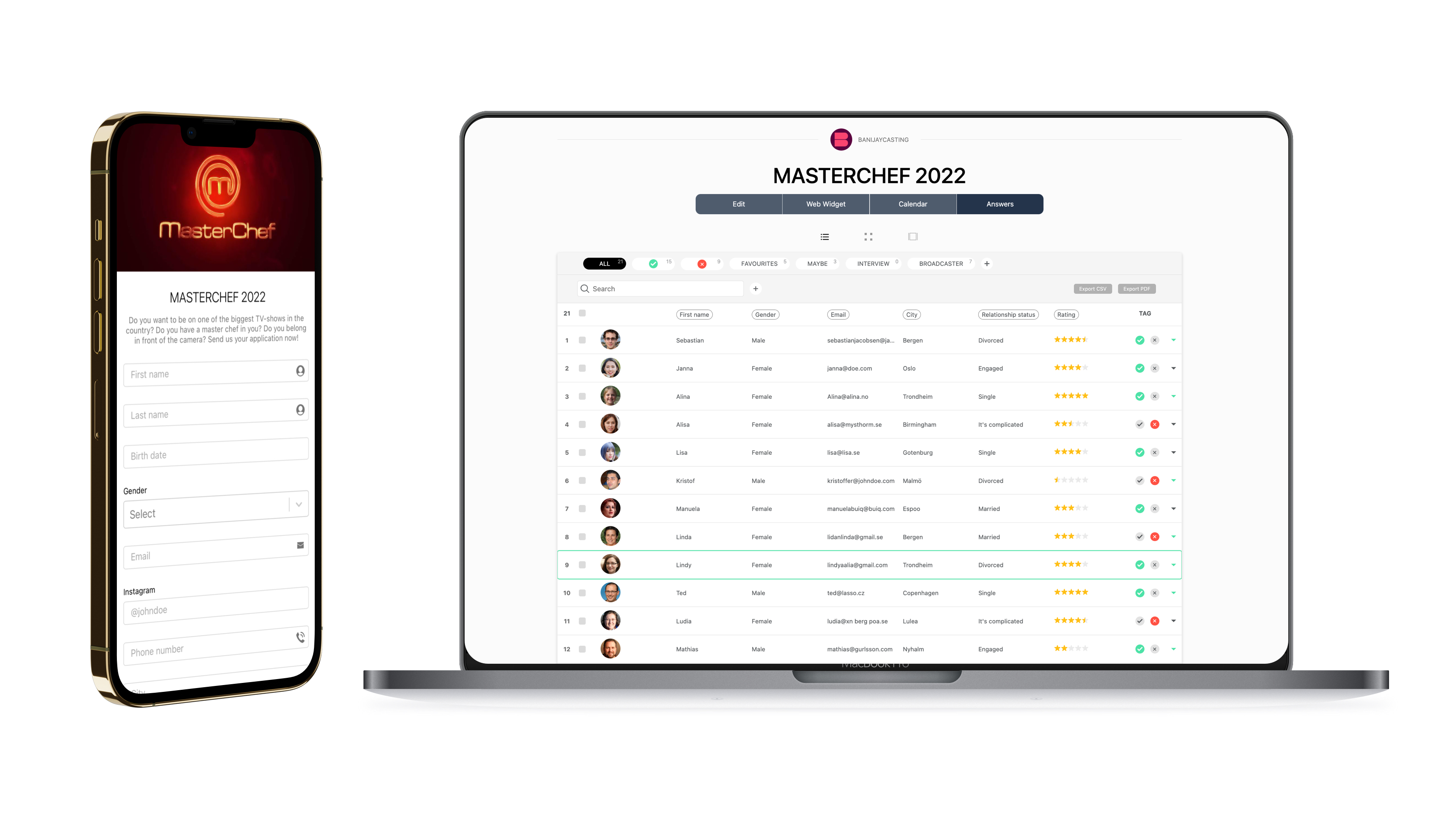- App Platform
- Pricing
- References
-
Apps as a Service
-
Mobile App as a Service
Get a tailored app done for you
-
Contest Voting App
Boost your voting contest with an app
-
Pageant Voting System
Create a flashy app for your pageant
-
Fan engagement app
Grow your fan engagement with an app
-
News app
Grow engagement with your readers
-
Event app
Engage your attendees
-
 TV Show app
TV Show appGrow interactions with your viewers
-
- Resources
- Work With Us

Broadcasters already have apps. Why do they need one more?
“Each case is a bit different”, says Heikki Rotko.
“But typically broadcasters have a separate news app – it’s packed with news. Then they have their streaming app, which is packed with streaming. It's advertising or subscription driven, but it's based on live video clips and live streaming.”, Heikki compares.
“The elements of an entertainment app could be embedded into one of these, but it really doesn't fit into the news app”, assesses Heikki, “and in the streaming apps that we have seen, the interactive piece gets a really, really tiny space. So it's kind of lost there.”
“The entertainment app would be full of the broadcaster’s best and most expensive shows. They pay for the licenses and the production of the shows. These programmes are always big investments for any given market.”, Heikki Rotko explains.
It's a way to get the audience closer from being just one way, as broadcast is, to a two-way channel.
“The broadcasters could get a lot more engagement, a lot better audience traction by putting them into one app.”, Heikki envisions. “They could have the interplay with the big screen and the small screen. And the small screen can also cover the live action, or the post-action, or whatever streams that you can. You can follow up with formal short clips. So it's a very natural way to complement the shows.”
“And then again with news and streaming you don't need that much interaction – but it's the entertainment shows, the reality shows, and even lifestyle shows that are the kind of shows where people want to rate the nicest furniture or the nicest garden.”, Heikki adds.
“It's a way to get the audience closer from being just one way, as broadcast is, to a two-way channel. It can be a very strong solution to keep the audiences closer to the content.”
Can you describe the features of a modern entertainment app?
“It depends, but typically it has the ability to show live content, live streaming. It has the ability to show a kind of a catalog of content. So, you know what happened earlier. It has a rich catalog of things, short clips, longer clips, and so on.”, Heikki Rotko begins.
“It has the ability that you can follow people if it's a dancer or a member on a love island villa – or if you watch sport – a football player.”
“People always have their favorite personalities. So you can follow them, then you get targeted push notifications about what happened to Anna this week and what happened to Henry yesterday or 2 hours ago.”
“So typically it’s to get you more of the content that you most like. You’re notified – not spammed – but notified around those topics that interest you.”
“Then you have the ability to participate. So you put your thumbs on emojis, you like, or dislike, you can vote, you can have casual votings, which are just for fun. Then you can have paid votes, which bring revenue for broadcasters and the production companies.”
“Then you can rate things. So let’s say in a decoration show you rate this sofa. Is it one star or five stars, this is closer to one!”
And all of this gives you first party data – that is just your data, between your audience and yourself.
“Let's say that if you sell tickets to something through a show. There's a final that the broadcaster sells tickets to, like a sports event, you can also sell a premium subscription. So you have premium content.”
“You can subscribe for a fixed monthly fee that is exclusive that can be interesting and an additional source of revenue. You could also integrate merchandising shops. For example, Love Island does this really well.”
Extra revenue sources, more time spent with content, interactions with the audience and entertainment – these are all key aspects of an entertainment app.
“And all of this gives you first party data – that is just your data, between your audience and yourself.”, Heikki emphasizes.
Could you tell us more about data collection opportunities in entertainment apps?
Heikki mentions several data collection opportunities that are enabled by an entertainment app.
First of all, apps generate lots of granular data: detailed behavioral data of what the users do in the app, which screens they view, how long they engage with the app, how much they spend, or when they are most active.
Broadcasters already have good data on the big screen viewing, and streaming viewing. This behavioral data from apps adds to it.
“You can learn from the audience, which is crucial.”
“When it comes to the interaction outside of the screen, then you can collect a lot of additional data points that trigger the audiences with an entertainment app.”, Heikki finds.
“You can watch it through Google Firebase minute by minute, and then you learn what you can do to have more unique viewers, and more minutes per viewer per day.”, Heikki describes.
“And when you have more viewers and engagement, you can capitalize that with advertising, video advertising, banner advertising, and different kinds of sponsorship opportunities within the app as well.”, Heikki explains.
“So you get a big amount of additional digital ad inventory, which is the most valuable inventory. Clients pay much more for that than they pay for YouTube on CPM level.”
Secondly, you can collect personal and demographic data – things that are asked on forms like name, age, contact details, interests, and so on.
This happens when you’re asking the user to create an account, or when they take part in votes, ratings, raffles, surveys or use other interactive features.
“This data you can use towards your advertisers and sponsors when you do it in the right way.”, Heikki points out.
You can learn from the audience, which is crucial.
On top of direct data collection, you can join your app data with CRM data, creating new opportunities.
For example, you can increase user data in your CRM, by using your app.
“Broadcaster CRMs typically have one, two, three, four, five or 10 million people who have registered. So you get more registered people through the app into your database.”, Heikki highlights.
Also, an entertainment app that’s focused on adding value to reality and entertainment shows, is a good opportunity to collect more data of younger audiences.
“No broadcaster has ‘enough’ younger audiences [in their CRM], or a tight enough relationship with them because they are so much skewed towards social media," Heikki points out.
“The point of data collection really is increasing the stickiness of the app and learning from the data. You see in real time what happens in your streams, on your websites, and in your apps.”, Heikki sums up. “Of course, in good alliance with GDPR.”




